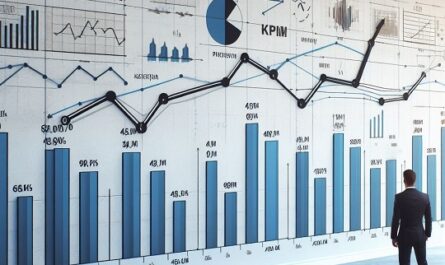Welcome to the world of supply chain management – a complex web of processes, expenses, and important factors. At its core are supply chain costs, which can greatly impact your business’s success.

In this detailed blog post, we’ll explore different aspects of these costs, explaining their direct impact on your business and sharing effective strategies to handle them.
Before we go further into this topic, don’t forget to follow my LinkedIn account. You’ll get more helpful insights on supply chain management there.
Table of Contents
Direct Costs: The Basics
To understand the foundation of direct costs in your supply chain, let’s break it down. These direct costs are closely linked to making and delivering products.
Here’s what they include.
Raw Materials
Raw materials are the essential ingredients for your products. You can control their cost, but it may vary due to factors like availability, quality, and global markets. Managing your raw material procurement can significantly impact your overall supply chain expenses.
Labor Costs
Labor costs cover the wages and compensation of everyone involved in making and delivering your products, from factory workers to delivery drivers. Efficiently managing your workforce is crucial for cost control.
Manufacturing Expenses
Manufacturing expenses include machinery, maintenance, and facility upkeep. These costs can add up, especially with complex machinery or frequent maintenance needs. To address these expenses, ensure efficient equipment use and stick to maintenance schedules.
Packaging Materials
Packaging materials protect and present your products. Costs for items like boxes, containers, and labels can add up, especially for specialized packaging. You need to find the right balance between product protection and cost-effective packaging to keep your supply chain financially healthy.

Transportation Costs: Keep Things Moving
When it comes to transportation costs, your role is crucial in managing how goods move from one place to another. This movement comes with its own set of expenses that directly affect your supply chain.
Here are the key things to consider.
Freight Charges
Freight charges are the costs associated with different shipping methods like air, sea, road, or rail. Your choice of transportation can have a big impact on your supply chain costs because each option has its own price and delivery times. Your decisions about how to transport goods directly affect your budget.
Fuel Costs
Fuel costs can be unpredictable, as fuel prices can go up and down. These fluctuations directly affect your transportation expenses. To manage this, it’s important to keep an eye on fuel prices and explore transportation options that are fuel-efficient. Your choices can help control costs and keep your budget stable.
Customs and Duties
If your supply chain crosses international borders, you’ll encounter customs and duties expenses. These fees vary between countries and depend on the type of product you’re shipping. To control costs, you need to follow customs regulations and find ways to minimize these duties strategically. Your ability to navigate these complexities directly impacts your supply chain’s financial health.

Inventory Costs: Finding the Right Balance
Dealing with inventory costs is like walking a tightrope, and you’re in the spotlight. These costs come from storing products until they’re sold, and they can seriously affect your supply chain budget.
Here’s what you need to keep in mind.
Storage Costs
Storage costs come from running warehouses and keeping goods there. If you have a lot of inventory, these costs can add up fast. You’re responsible for making the most of your warehouse space and finding storage solutions that are both efficient and budget-friendly. Your choices here directly affect your supply chain’s finances.
Carrying Costs
Carrying costs include things like interest, insurance, and depreciation related to your stored inventory. Over time, the value of your inventory can decrease, leading to financial losses. To prevent this, you need to stay on top of inventory turnover and management. Keeping your inventory moving and restocking when needed is crucial to reducing carrying costs.
Obsolescence
Outdated or unsellable inventory is a big problem for your supply chain costs. It can lead to write-offs and lost income. As you manage your inventory, it’s your job to regularly check and assess it to prevent obsolescence. Taking this proactive approach is vital for your supply chain’s financial well-being.
In this balancing act with inventory, your decisions and strategies have a big impact on how efficiently your supply chain runs and how cost-effective it is. By actively managing these inventory-related costs, you can help keep your supply chain financially healthy and competitive.

You might also like:
- Compete or Collaborate with Competitors? Which One is Better?
- How to Build a Reliable and Trustworthy Supply Chain Management Team: You Can Lead the Way!
Managing Demand Changes: Surfing the Demand Wave
When it comes to demand fluctuations, you’re like the captain riding the waves of customer needs. Supply chain costs aren’t constant; they go up and down based on changes in demand.
To control costs effectively in this ever-changing environment, here’s what you need to keep in mind.
Stockouts
Stockouts happen when you don’t have enough inventory to meet customer demand. While it might seem like a good idea to keep inventory low to save money, it’s important to understand that stockouts can lead to lost sales and unhappy customers. Your job is to find the right balance between inventory and demand to keep your supply chain responsive and customer-focused.
Overstocking
On the other hand, having too much inventory can result in costs related to excess stock and the risk of having to write it off. Maintaining more inventory than you need comes with its own set of expenses and risks. As you manage your supply chain, you have the crucial task of finding the right balance between supply and demand. Making the right decisions here can directly affect your cost-efficiency and overall supply chain performance.
In the constantly changing world of supply chain management, you’re the one steering the ship. By understanding and adapting to demand fluctuations, you can optimize your supply chain to stay responsive, cost-effective, and aligned with customer expectations.

Supplier Relationships: Teamwork Matters
When it comes to working with your suppliers, think of yourself as the one who helps build teamwork. How well you work with your suppliers can really affect how much your supply chain costs.
As you deal with this important area, here are two things to keep in mind.
Supplier Costs
When it comes to what you pay your suppliers, you’re in charge. If you can negotiate good prices, terms, and contracts with your suppliers, it can directly save you money. Building strong relationships with your suppliers can help you get better prices and terms. Your skill in these negotiations can be a powerful way to control costs.
Supplier Performance
The quality of your suppliers’ products and how reliably they deliver them are super important for your costs. Late deliveries, bad products, or inconsistent quality can lead to extra expenses and problems in your supply chain. You need to watch and evaluate how well your suppliers are doing. If you spot issues, deal with them quickly to avoid problems and keep your supply chain running smoothly and affordably.
As you build these teamwork-oriented relationships with your suppliers, you can make your supply chain work better, which means it’ll be more cost-effective and help your business succeed.

Risk Management: Reducing Uncertainty
When it comes to managing risks, think of yourself as the protector against the unknown. It’s important to realize that supply chain costs can be affected by unexpected events and factors beyond your control.
As you take charge of this important task, there are two main things to focus on.
Dealing with Disruptions
Disruptions can happen in many ways, like natural disasters or political issues. These surprises can lead to big expenses, such as having to change your supply chain or deal with emergencies. As the person in charge of risk management, your job is to make plans for these situations and come up with ways to reduce the impact of these unexpected events. Being prepared is crucial to keeping your supply chain safe from financial problems.
Spending to Reduce Risks
Taking steps to reduce risks might mean spending money upfront. But it’s important to know that these investments can help protect your business from bigger losses when disruptions happen. As you handle this responsibility, you need to carefully weigh the costs against the benefits of these risk reduction efforts. Your smart decisions here can determine how well your supply chain and business can bounce back from unexpected challenges.
In the world of risk management, you play a central role. By planning ahead and reducing uncertainty, you contribute to making your supply chain and business more stable and enduring.

You migth also like:
- Unlocking Progress: The Power of Embracing Change
- Improving Your Bottom Line: Why You Can’t Overlook the Importance of Routine Performance Reviews
Technology Investments: Boosting Efficiency
When it comes to technology investments, think of yourself as the one who can make your supply chain work better. These investments can really change how much your supply chain costs.
Here are two important things you need to think about.
Supply Chain Software
Your choices about using supply chain software and tools can make a big difference in how your operations work and how efficient they are. These technologies help you make your supply chain processes run more smoothly and effectively. When you use supply chain software, you get the tools you need to make smart decisions based on data, which can help you save a lot of money.
Data Analytics
Data analytics lets you see how well your supply chain is doing and find ways to save money. Since you’re the one leading the way, it’s your job to use data analytics tools wisely. These tools give you the information you need to make smart decisions that can directly reduce your costs.
In the world of technology investments, you’re the one who can make things work more efficiently. By thinking about these things and using technology wisely, you can make your supply chain more cost-effective and help your business succeed.

Sustainability: Going Green in Your Business
When it comes to sustainability, think of yourself as the leader in making your operations more eco-friendly. It’s important to realize that nowadays, being sustainable is not just the right thing to do; it also affects your costs.
Here are two important parts of sustainability in terms of supply chain costs, where your actions and decisions really matter.
Green Practices
Going for green practices means you invest in eco-friendly ways of doing things, like using energy-efficient transportation or sustainable packaging. These practices not only match what consumers want today but can also save you money in the long run. Since you’re in charge of your supply chain, you have the chance to make choices that help the environment and cut costs at the same time.
Meeting Environmental Standards
As you work toward sustainability, you might have to deal with costs related to following environmental rules and standards. It’s important to understand that these costs are part of the journey to sustainability. Your job is to make sure your operations and practices meet these rules, even if it means spending money to comply. By doing this, you protect your brand from legal problems and public criticism for not following the rules, which helps reduce long-term risks.
In the world of sustainability and eco-friendly operations, you’re the one who can make a difference. By actively adopting green practices and managing the costs of meeting environmental standards, you can lead your supply chain toward a more sustainable and cost-effective future, all while safeguarding your business’s reputation and long-term success.

Conclusion: Costs That Connect Everything
In summary, it’s clear that supply chain costs are like a complex puzzle, and you’re the one who needs to put it all together.
Understanding these parts helps you make your business more efficient and successful.
Managing supply chain costs well means looking at everything: direct costs, transportation costs, inventory costs, dealing with changes in demand, working with suppliers, handling risks, using technology, and being eco-friendly.
In today’s super competitive business world, the businesses that do the best are the ones where you, as a decision-maker, really stand out in managing supply chain costs.
This puts you in a great position to not just do well but also adapt quickly to the changing market.
By actively using cost-saving strategies and being open to new ideas, you can create a supply chain that’s strong and doesn’t waste money, and that’s a big part of making your whole business a success.
I hope you find it helpful!

Please share this article with your colleagues so they can also benefit. For more insights on supply chain management, follow my LinkedIn account. You’re free to use all articles on this blog for any purpose, even for commercial use, without needing to give credit.

 by
by 

